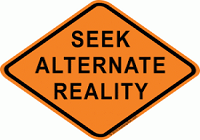The ending of Inception is one of the most famous and iconic scenes in movie history. The totem keeps spinning, leaving the viewer on the edge of an astonishingly dramatic precipice.
It was a good movie, but soon after, people slowly left the world of science fiction and dreams and come back to reality. But the idea doesn’t go away. An idea, as Di Caprio claims, is the most resilient entity.
And the fact is, the more ridiculous and ambitious an idea is, the more resilient it is. Humans tend to remember unusual and out-of-place occurrences more so than routine ones. And what is more is crazier than alternate reality.
The concept of alternate reality has been the Klondike of science fiction thrillers. But is it basis enough to enter the realm of science fact? True enough, dreams are the only real events which can be labelled as parallel realities. But, maybe it’s shouldn’t be just a concept anymore.
In this day and age, where technology can seemingly solve almost all problems, the assumption that alternate reality can be a possibility shouldn’t be that far fetched.
Many major-league tech-companies like Google, Samsung, etc. are working hard to make alternate reality a reality. Of course what they’re working on is better termed as augmented reality that is, extending your reality by creating goggle-like virtual reality devices.
True alternate reality would mean that the subject would only be aware of that particular reality and not his actual world of physical existence – just like dreams.
The primary hurdle is data collection. If we want to create an alternate reality, it is not just about how it looks but also about how it feels to the subject. The alternate reality has to ‘behave’ just like his own reality does. Once that data is aggregated, the next challenge is to create complex and ‘intelligent’ systems that can process that data into information that will be completely suitable to be the yarn to the fabric of an alternate reality.
The final step would be to create a delivery mechanism – a visual and cognitive system that feeds information to the neural input lines of our brain so that we feel like we are finally there.
The applications of a mouthwatering piece of technology like alternate reality are numerous. Imagine living the life you always wanted to live, or visiting places or doing things you could never do in real life. Creating simulations of real life would also be a viable method to do something economists and data analyzers are trying so hard to do – predict the future.
Of course, the concept has a long way to go realistically speaking, but fantasizing about such ideas and working towards them are the only way they’ll ever come true. Or maybe, they already have.
As the age group of the television audience ages the programmes tend to become more ‘real’ set in what is essentially the real world although still a fictional story. Is this the media’s way of trying to prepare us for life? For example programmes such as the queen’s nose and Bernard’s watch are set in the world of a real child, but they have a fantastical element to make the program interesting to watch. Watching a boy with a bog standard pocket watch walk around on a normal day isn’t exactly good entertainment. Magic and fantasy are intriguing. And the world of fantasy and imagination is a very real one. It is where our arts come from and I am completely fascinated by it. Books, films, dreams, theatre, music, poetry, art, gaming, all forms of creative expression in some way create their own little world. They are all little forms of escape you might say. This carries forward the idea that we seek comfort in imagination and imaginary things, just as it makes us comfortable and secure as children. As we progress into late childhood and our teen years we delve more and more into these arts. As we are encouraged to read and explore literature we delve more into the imaginations of others.
We are curious creatures and we don’t think that we will ever stop yearning to explore the realms of what our imaginations can achieve and sharing these wonderful thoughts and feelings with others. The world of the imaginary, like anything else in life can be abused, but the majority indulge in fantasy in a healthy way.
Click here for government certification in Information Technology





4 Comments. Leave new
Informative
Great article!
Well articulated…
Good.